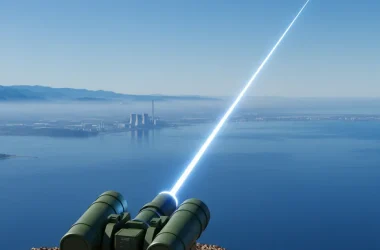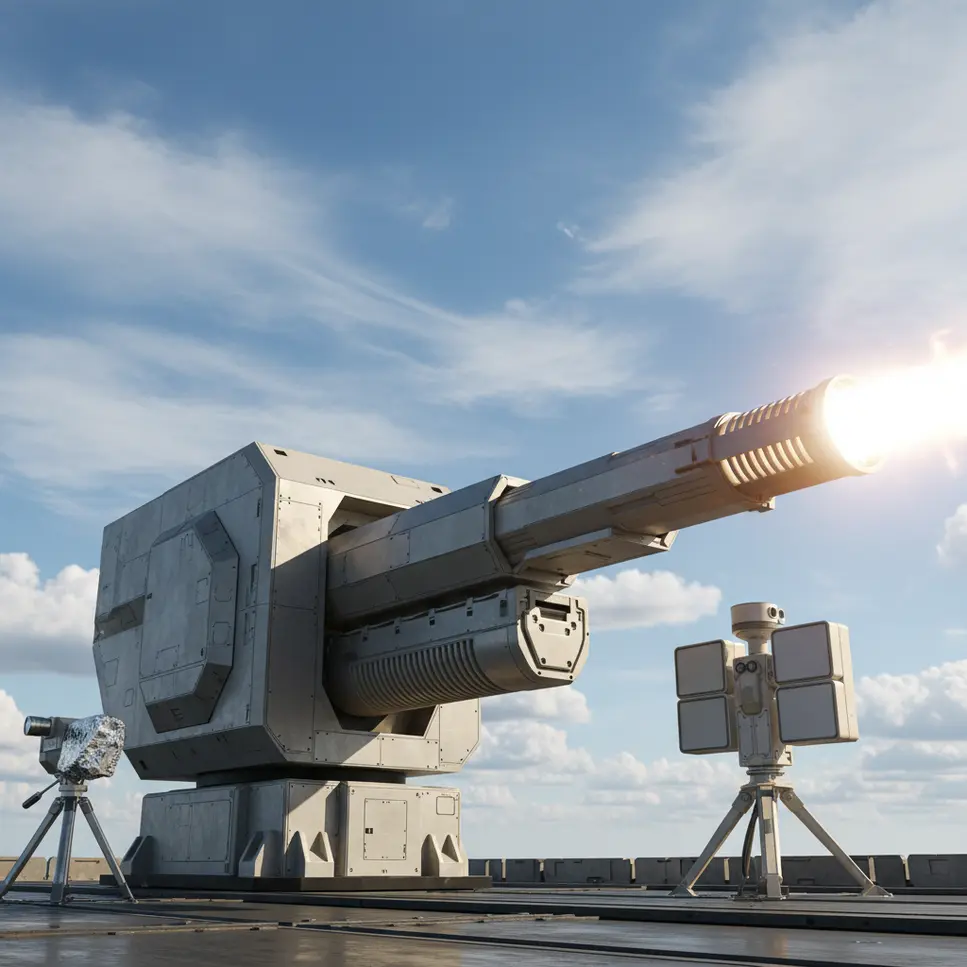China’s Nuclear Carrier: Adding Hypersonic Railgun for Missile Defense
The expansion of military technology has taken a significant turn with China’s latest advancements in naval warfare. The development of the Type 004 nuclear-powered aircraft carrier, anticipated to incorporate futuristic weapons such as electromagnetic railguns and high-energy lasers, marks a pivotal step in modernizing defense strategies. This innovation positions China as a leader in employing directed-energy weapons aimed at intercepting aerial threats, a capability historically limited to a few global superpowers such as the United States and France.
- Development and features of the Type 004 carrier
- Technological advancements in railgun and laser systems
- Comparison with US and French naval capabilities
- Potential global impacts and strategic shifts
- Recommendations for future military innovations
Evolution of Chinese Naval Engineering
The journey of integrating advanced weapons into Chinese naval forces began in the early 2010s. Initial tests on smaller vessels highlighted the potential of railguns, propelling metallic projectiles using electromagnetic force without traditional gunpowder. As maritime defense capabilities were pushed to new limits, the integration of such technologies into the larger and more autonomous Type 004 aircraft carrier represents a quantum leap in naval power. China’s focus on nuclear propulsion goes beyond mere energy sufficiency; it underscores a strategic shift towards operational independence and extended reach in global waters.
Technical Specifications and Capabilities
Two crucial attributes of the railgun are its capacity to hit targets at distances up to 200 km and projectiles traveling at velocities of Mach 7, approximately 2.4 kilometers per second. The implementation of the Integrated Electric Propulsion (IEP) system is designed to provide the unprecedented energy required for such high-powered weaponry. The Type 004 is expected to possess four electromagnetic aircraft launch systems (EMALS), facilitating rapid aircraft deployment and enhancing tactical flexibility.
“China’s future nuclear-powered aircraft carrier can be equipped with more advanced defensive weapons, such as a high-energy laser weapon and electromagnetic rail gun.” — Liang Fang, National Defense Academy of China.
- Railgun range: up to 200 km
- Projectile speed: Mach 7
- Weaponry includes railguns and high-energy lasers
- Expected launch date: 2028-2029
Global Context and Competitive Edge
The development of the Type 004 not only strengthens China’s maritime defense but also challenges the existing balance of power at sea, particularly in the Pacific region. Comparisons with international counterparts reveal a competitive stance primarily against the United States, Japan, and France, which are also exploring directed-energy solutions. As naval forces globally aim for stealth and precision, China’s leap towards operationalizing railguns and lasers could trigger a new arms race, necessitating adaptive strategies by other naval powers.
Future Prospects and Strategic Recommendations
As China continues to progress towards launching the Type 004, potential implications span economic, geopolitical, and environmental arenas. Economically, this endeavor could spur further advancements in the domestic defense industry, enhancing export potential for sophisticated weapon systems. Environmentally, deploying nuclear propulsion aids in reducing carbon footprints but raises concerns about radioactive waste management. Strategically, staying ahead in naval technology calls for continuous research in miniaturizing power supplies and overcoming integration challenges. It is crucial for China to engage collaboratively with global entities, ensuring sustainable military innovations and normative compliance.
Frequently Asked Questions
How does the railgun technology differ from traditional artillery?
Unlike conventional artillery relying on explosive propulsion, railguns utilize electromagnetic forces to accelerate projectiles, achieving higher velocities and ranges without the use of gunpowder.
What are the potential environmental impacts of nuclear-powered carriers?
While nuclear propulsion reduces reliance on fossil fuels and cuts emissions, it raises concerns over the safe disposal of radioactive waste and potential risks associated with nuclear reactors at sea.
For those interested in exploring more on innovative military technologies, read also about the advancements in automated defense systems.









